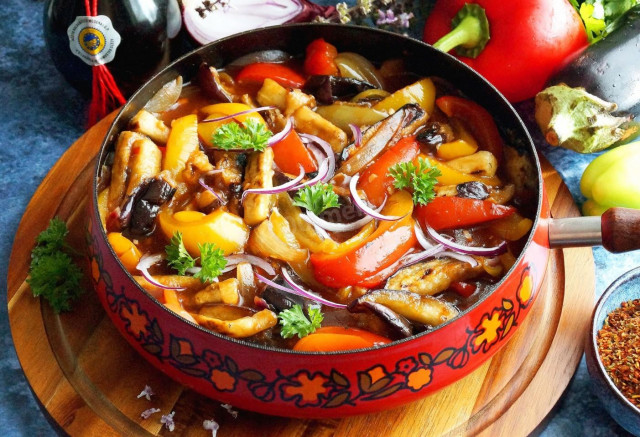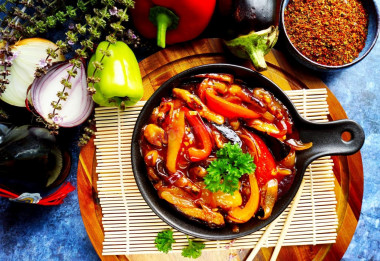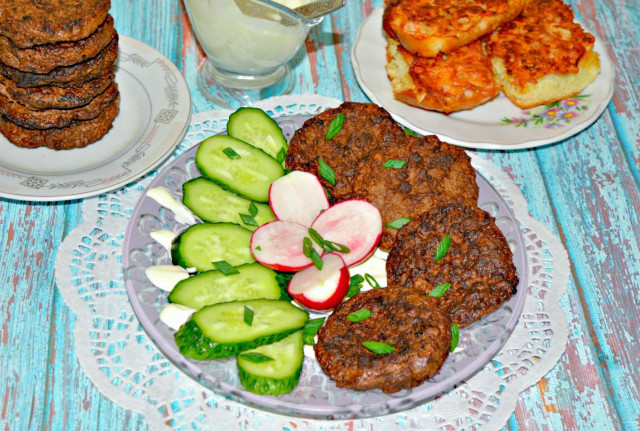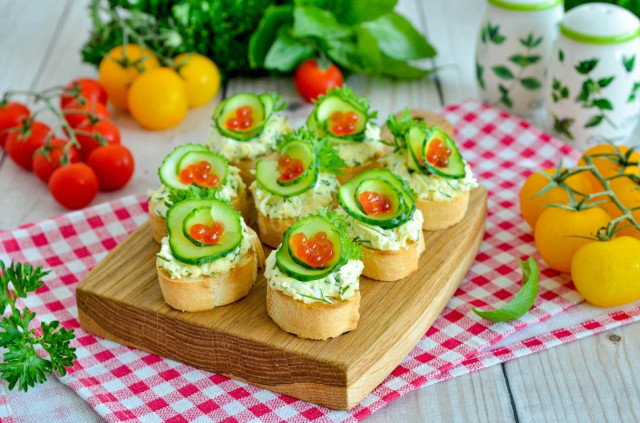Composition / ingredients
Step-by-step cooking
Step 1:
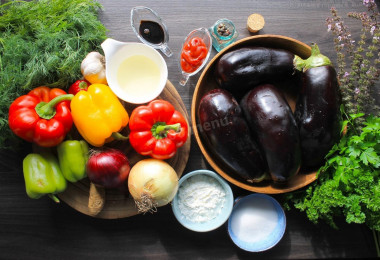
How to make eggplant in sweet and sour sauce? Prepare all the necessary products that are specified in the recipe. I took two types of onions, the usual onion and red salad.
Step 2:

Peel the onion, garlic and ginger. Rinse all vegetables in clean water and dry with paper napkins. In eggplants, cut off the attachment points of the peduncle. Cut the bell peppers in half and remove the core with the seeds. If you take peppers of different colors, then your dish will turn out incredibly bright and appetizing.
Step 3:
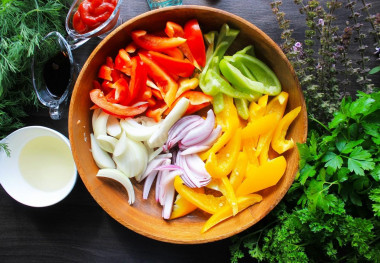
Cut the bell peppers and onions into medium-thick feathers.
Step 4:

Cut the eggplant into cubes, as in the photo.
Step 5:
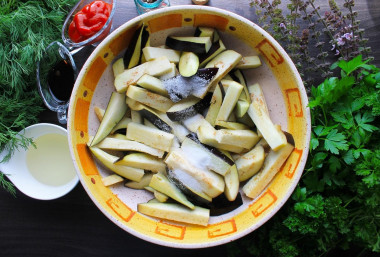
There are varieties of blue ones that are bitter. In this case, I advise you to put the eggplant pieces in a deep container, add 1 tablespoon without a hill of salt and mix. Leave this way for 15-20 minutes. Then rinse the eggplants and squeeze out excess water. Put the blue ones on napkins and dry them.
Step 6:
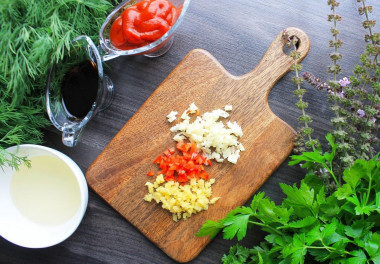
Chop garlic, hot pepper and ginger as finely as possible. Instead of a chili pod, it is permissible to use dry ground hot pepper.
Step 7:
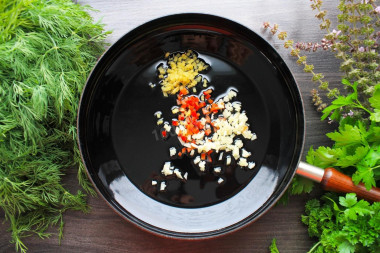
Heat vegetable oil in a frying pan with high edges or in a wok pan. Fry the garlic, ginger and pepper for 1 to 3 minutes. Stir continuously with a wooden spatula so that nothing burns.
Step 8:
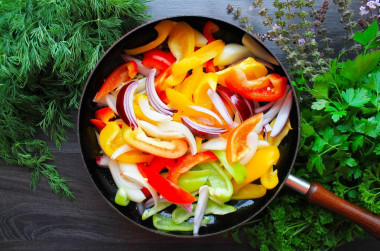
Put the bell pepper and onion in the pan. Fry on a high flame for 4-5 minutes, do not forget to stir.
Step 9:
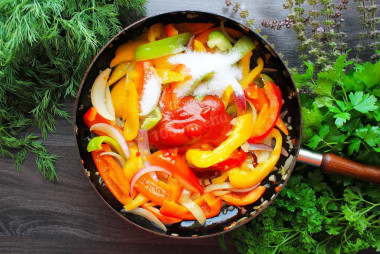
Add tomato paste and sugar. Instead of sugar, it is permissible to use honey. Add sugar gradually, as 2 tbsp.l. may be a lot for you. It is better to adjust the taste at the end of cooking and sweeten a little more if necessary.
Step 10:

Warm everything up instead of 2 minutes. Pour in soy sauce and apple cider vinegar. Instead of apple cider vinegar, I sometimes use the juice of freshly squeezed lemon, it is also great for the recipe. Add ground coriander and ground black pepper. Mix it up.
Step 11:

In a glass of cold water, dissolve one tablespoon of corn starch.
Step 12:
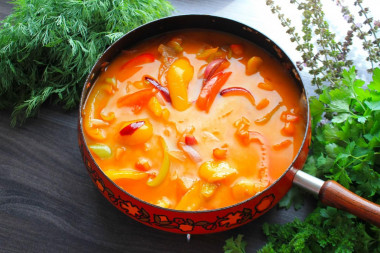
Pour the starch liquid into the pan and bring to a boil. Turn the stove down to moderate and leave the vegetables to boil for about five minutes. During this time, the sauce will thicken due to starch. Remove the pan from the heat, and at this time, take care of the eggplants.
Step 13:
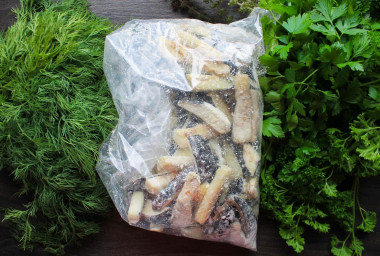
Pour the remaining 3 spoons of starch into a cellophane bag. Send the blue bars there as well. Shake thoroughly so that the starch is evenly distributed over the eggplant. In a clean frying pan, heat the remaining vegetable oil and fry the eggplants until golden brown on all sides.
Step 14:

Send the blue ones to the pan with the sauce, stir and bring to a boil over high heat. Add salt to taste. Boil for 2-3 minutes. Taste it again and add the missing component (salt, sugar or vinegar) if necessary.
Step 15:
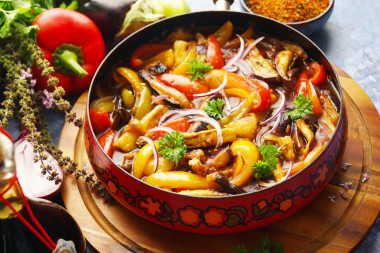
Eggplants are ready, you can serve! If desired, decorate the dish with fresh herbs and thin red onion feathers.
Perfectly combined with such eggplant fish or boiled rice.
Bon appetit!
If you use ready-made spice mixes, be sure to read the composition on the package. Often, salt is already present in such mixtures, take this into account, otherwise you risk over-salting the dish.
Since the degree of salinity, sweetness, bitterness, sharpness, acid, burning is individual for everyone, always add spices, spices and seasonings, focusing on your taste! If you put some of the seasonings for the first time, then keep in mind that there are spices that it is especially important not to shift (for example, chili pepper).
Use oil with a high smoking temperature for frying! Any oils are useful only until a certain temperature is reached - the point of smoking, at which the oil begins to burn and toxic substances, including carcinogens, are formed in it.
Unrefined oils, with rare exceptions, have a low smoking point. There are a lot of unfiltered organic particles in them, which quickly begin to burn.
Refined oils are more resistant to heating, and their smoking point is higher. If you are going to cook food in the oven, on a frying pan or grill, make sure that you use oil with a high smoking point. The most common of the oils with a high smoking point: refined varieties of sunflower, olive and grape.
Caloric content of the products possible in the composition of the dish
- Onion - 41 kcal/100g
- Sweet pepper - 27 kcal/100g
- Eggplant - 24 kcal/100g
- Garlic - 143 kcal/100g
- Ginger - 80 kcal/100g
- Dry ginger - 347 kcal/100g
- Pickled ginger - 51 kcal/100g
- Soy sauce - 51 kcal/100g
- Granulated sugar - 398 kcal/100g
- Sugar - 398 kcal/100g
- Vegetable oil - 873 kcal/100g
- Tomato paste - 28 kcal/100g
- Salt - 0 kcal/100g
- Water - 0 kcal/100g
- Apple cider vinegar - 14 kcal/100g
- Chili pepper - 40 kcal/100g
- Corn starch - 329 kcal/100g
- Ground coriander - 25 kcal/100g

